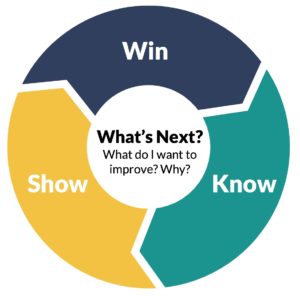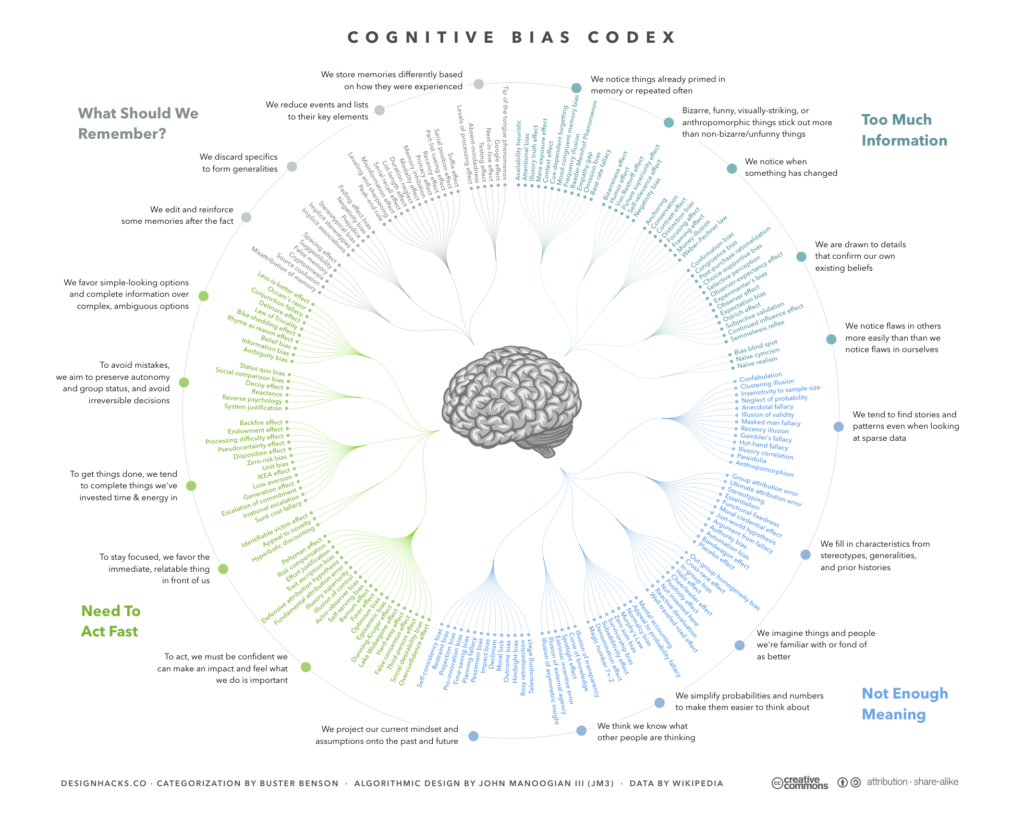How Do You Increase Organizational Citizenship (and Employee Engagement)?
Quick recap from last week:
- Chasing employee engagement (especially employee happiness) doesn’t work. Engagement is too squishy to define and often your unhappy or frustrated employees are your most engaged.
- What does work is increasing Organizational Citizenship Behavior (OCB). That is the only observable way to know whether your employees (or you) are engaged or not.
Which brings us back to the key question: How do you increase Organizational Citizenship?
Here’s 5 Research-Backed Steps to Increase OCBs for Your Team
One: Focus On Progress, Not Engagement.
Have you ever struggled with meditation? You sit and tell your brain to be calm, but instead your “monkey-mind” goes into overdrive thinking about… well, everything but being calm. The masters know the answer is to stop forcing the issue and to just notice what’s happening. Each time you catch your mind wandering now is a sign of progress. Which ironically makes the distractions less concerning and, in a way, welcome.
Engagement works the same way. You can’t force people to be engaged organizational citizens. Engagement is voluntary. No matter what you pay or offer in benefits. How cool your product or service. Whatever perks you offer. Everyone still chooses how much of themselves they are going to give from day to day. And in that sense, “everyone is a volunteer.”
But there still has to be something you can do to encourage people to bring their volunteer spirit with them to work each day. The good news is that there is. Help them see they are making progress in their life. Here is a model to guide you in doing just that.
Two: Ask “What’s Next?” To Blaze the Trail
Step one to helping a team member make progress in his or her life is to ask one simple question: “What’s next?”
If you’ve ever gone on a hiking trip, you’ve noticed the trail is usually marked with blazes. These blazes are painted or hung on trees. They are a sign you are on the right path. Often, they are spaced pretty far apart so it’s not abnormal to walk for a while without seeing one. But you know that if it’s been too long, you are lost. And that you need to retrace your steps in order to find where you got off the path.
“What’s next?” is a way for you to blaze the trail for your teammate. This question helps you figure out what path they are on, and what series of steps they’ll need to take. Notice how this question avoids looking too far ahead. That’s on purpose. Focusing on a big goal is often counterproductive. It makes it easy to give up (as in “I’ll never lose 100 pounds, so why not eat that third helping”). And even more interesting, sometimes reaching a big goal can be depressing. And have the ironic effect of making it easy to quit after all the progress is made.
Asking “what’s next” gets your teammate thinking about progress, and that’s a HUGE motivator.
Progress becomes a self-reinforcing, virtuous circle.
People who are making progress in their lives are more motivated personally. They are also more motivated to help their team.
Teresa Amabile and Steven Kramer studied the power of progress at work in their recent book The Progress Principle. The main conclusion of their study is that when we make progress, we improve our “inner work life” – the way we internally experience our work. And inner work life is directly connected to engagement.
So step one is to stop focusing on engagement and start focusing on progress is by asking “What’s next?”
Then, the question is, how can a leader help refine a goal into a proven way to manage progress? We’ve developed the Win, Know, Show model to help you do just that.
- What is their next small win?
- How will they know from the work itself whether they are making progress?
- When and how will they show their progress?

Ready to learn more? Let’s start with small wins.
Three: Identify a Small Win
So you’ve asked “What’s next?” And just like a Zen master you’re no longer focused on the end result of engagement. Instead, you’re focused on small steps your teammate takes each day. The next step is to help your teammate identify a small win.
A small win isn’t a big ambition. It’s the next logical improvement they need to meet their “what’s next” goal. It should require a little bit of a stretch, but nothing too far out of reach.
Setting a small win helps make sure your teammate can see progress. What kind of small wins work best? Progress that relates to improving on a task. Or deeper involvement in a project. Maybe even process-related goals like working harder or longer.
Here’s what the professors have to say:
“We discovered that the inner work life effect operates in three primary ways: attention to tasks, engagement in the project, and intention to work hard. When inner work life is good, people are more likely to pay attention to the work itself, become deeply engaged in their team’s project, and hold fast to the goal of doing a great job. When inner work life is bad, people are more likely to get distracted from their work, disengage from their team’s projects, and give up on trying to achieve the goals set before them.”
One other critical point. Your teammate’s next small win (or their “What’s Next?”) might not be work related. That’s cool. If it’s something you can help them with, do it. Progress won’t always be work related. And occasionally, progress on personal goals might even mean your employee leaves to pursue some other life ambition. You may not like that, but here’s the good news.
That person will run through brick walls for you while they do work for you. They will be your biggest fan (and recruiter) when they leave. And leaders with a reputation for developing talent will attract more of it.
Four: Know When You’re Headed the Right Way (or the Wrong Way)
Making progress is motivating, but daily frustrations can easily overwhelm any progress you make. Professors Amabile and Kramer note:
“The connection between mood and negative work events is about five times stronger than the connection between mood and positive events. Employees recall more negative leader actions than positive actions, and they recall the negative actions more intensely and in more detail than the positive ones.”
That’s why it’s important to establish your “right way/wrong way” yardstick. How will you and your teammate know whether they are making progress? Ideally this feedback will come from the work or task itself. You also want to ask up front about what sorts of obstacles or frustrations could get in the way of progress.
Make sure to talk about how to measure progress.
A good place for inspiration? Video games. The reason video games are so addictive is that they give you immediate “right way/wrong way” feedback. It’s easy to see whether you are improving or getting worse. You can watch your score, the damage you’ve sustained, and the damage you’ve invoked upon your opponent.
What measures are available that can help your teammate see progress in real time? If there aren’t any visible “production” measures, how about process measures? What other ways are there to get feedback?
If you’re having a hard time identifying ways to get feedback, that might be a signal that you should re-think the small win. If you can’t measure progress it’s going to be easy to get stuck.
Don’t forget to look for obstacles and possible frustrations up front. Then, come up with a plan to overcome them. There are two important reasons for this. First, as the good professors suggest, you need to make sure the “steps forward” to “steps back” ratio is around 5:1 in favor of progress. Second, the best research shows that if we plan for obstacles we are way more likely to “grit” our way through them (even if we plan for a different obstacle than the one we eventually face).
This is why it’s so important for leaders to work every day to reduce daily frustrations. It doesn’t matter how much progress you make doing good things for your team. The daily frustrations will outweigh them all day, every day. Avoid taking one step forward, just to take four steps back. Really focus on discovering and reducing daily frustrations for your team.
Five: Show Your Work
You and your teammate have blazed the trail and identified the next small win. You know how you’re going to measure progress. But that’s not enough. Perhaps the most important step is for your teammate to show their progress.
Austin Kleon wrote a brilliant book called Show Your Work. While he focuses a lot on people who work in the visual arts, the lessons he teaches apply to all of us. His basic idea is that the “finished” project is perhaps the least interesting part of the work. What is most interesting are the steps taken to create the project. So his advice: Show Your Work.
This advice can really apply to any field. There are reality TV shows on almost every network today that take us behind the scenes of virtually every kind of work (car shops, kitchens, remodeling, dirty jobs, and so on). People love the chance to show off what they’re working on. It gives us a sense of pride. Honors the craft we dedicate our lives to. Not only that, the feedback you get by sharing your process creates the opportunity to teach and motivate others. It also gives you the chance to learn from others who may have a trick or shortcut you never thought of.
Some people feel like showing their work is showing off.
There is a little element of that, too. But it’s showing off in the best sense of that word. It’s not bragging or taking a victory lap. It is saying, “here’s what I did – the value I created.” It gives others permission to shine a light on the value they create too. Kleon created a great way to do this. Simply take a picture of your work (or of you working) and post it somewhere with the hashtag #ShowYourWork.
Whether your teammate posts their work for the world to see, or just shares it with you or the department, the important thing is that they get a chance to share. Building that into the progress management process helps to set a time-frame for progress. It gives them a reason to get something done (and let’s face it – sometimes that’s the motivation we need to get our noses on that grindstone). If your teammate isn’t ready to show at the designated time, that’s a great signal to check in and see if something is in the way or if they are off the trail.
The Takeaway
Everyone’s a volunteer – so look for OCB instead of engagement. You can’t force people to be engaged. In fact, engagement is such a squishy concept, it is nearly impossible to measure. Which is why leaders should focus on Organizational Citizenship instead.
There are 5 ways leaders can help create more organizational citizenship at work:
- Focus on Progress: Nothing motivates more than progress. Managing progress manages inner work life, and generates both internal motivation and motivation to help your team (aka organizational citizenship behavior).
- Ask “What’s Next?” This blazes the trail for progress. Make sure your teammate is focusing on the next blaze, not the end of the trail (big goals often kill motivation and progress).
- Identify the Next Small Win: Once you know where your teammate is headed, identify the next small step they can take to get there. Focus on task, process or effort-related goals. And it’s OK if the goal isn’t work related.
- What’s Your Yardstick? Make sure your teammate can measure progress, ideally from the work itself. Having trouble figuring out a good yardstick? That’s a sign you might want to revise your small win.
- Show Your Work: Take a victory lap. Figure out how your teammate can show their progress to you and others. Remember this isn’t bragging. It’s a way to honor the work and to get feedback and advice from others.
Bonus tip:
Don’t forget to lead by example. We’ve already established you can’t force people to engage in OCB activity. But you can help get the ball rolling by volunteering yourself. Organizational citizenship is contagious. Volunteering encourages others to volunteer. Also, make it a priority to zealously remove small daily frustrations. This shows OCB on your part (you don’t have to care about “the little stuff,” but you can choose to). It also shows your team that you value their daily experience. And you recognize that their struggles are real and valid.
Leading by example is the simplest and most effective way to develop and nurture the culture in your workplace. You are watched more than you realize. And, like us all, your actions speak much louder than your words.
Which of the 5 tips for encouraging OCB at your workplace do you see the most room for improvement? What’s your next step? How will you know if you’re making progress? Who can you show that work to? See what I did there 😉



















